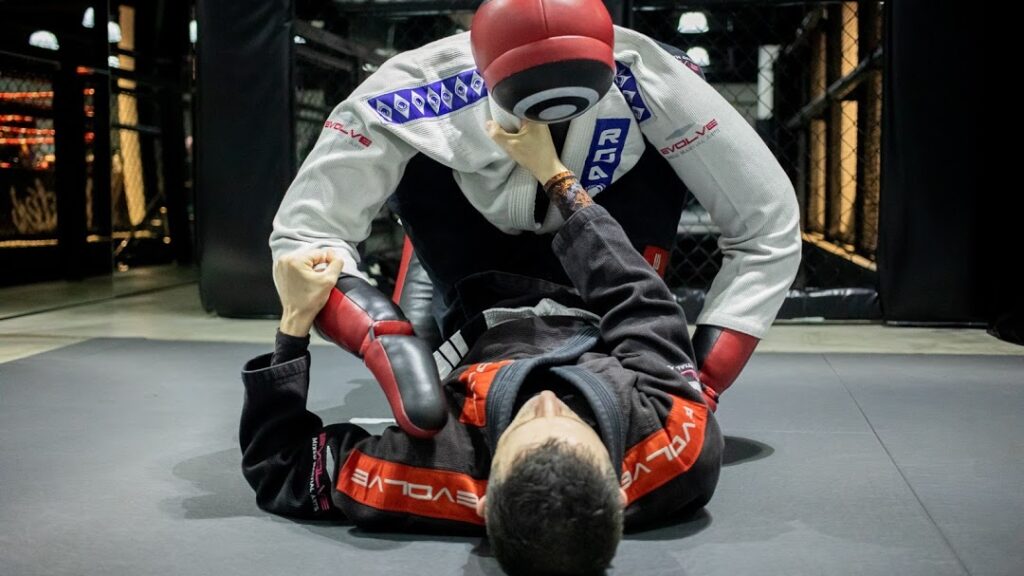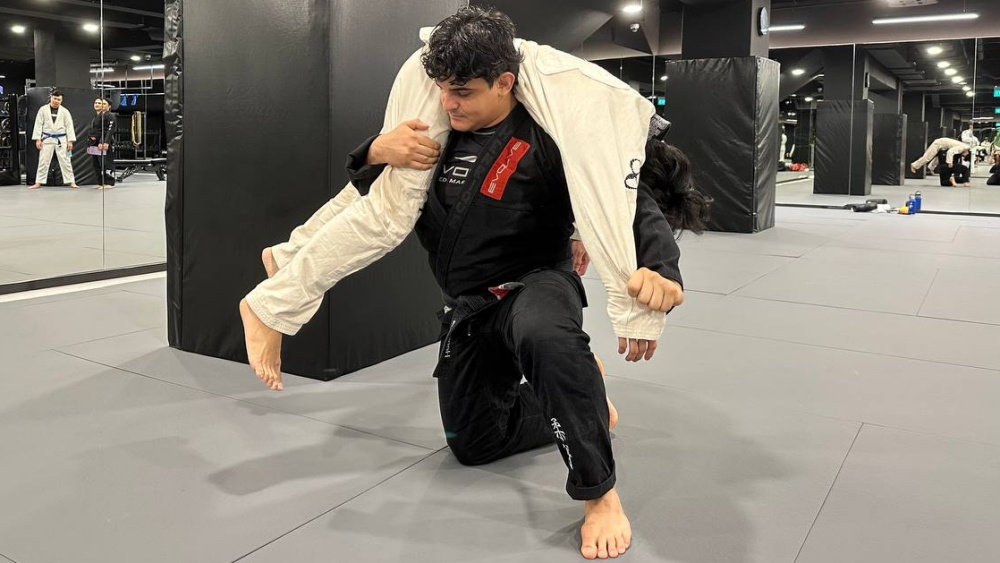As a BJJ beginner, there is a lot to learn. In fact, there is so much to learn, it can be difficult to know where to start. BJJ’s endless number of techniques and positional variations is one of the things that makes the art so interesting for students of all ages and abilities. With so much to learn, you never get bored! However, before you begin to delve into specific submissions, escapes, etc., you should first familiarize yourself with BJJ’s basic positions. Once you have a good understanding of BJJ’s basic positions, you can then move on to more advanced techniques. In this article, we examine the first 3 positions you should master in BJJ.
1) Full Mount
Full mount is an extremely powerful position in BJJ. This position involves sitting on an opponent’s chest with the knees pinched tightly against his or her sides. In addition to being a powerful position for use inside the BJJ academy, this position allows the person in top position to strike his or her opponent without fear of being hit back. Full mount also offers the opportunity for submissions and transitions to rear mount.
Tips to Improve Your Full Mount
Focus on Balance
If your balance is poor, you’ll have a tough time with the full mount. It’s nearly impossible to attempt submissions from full mount when you’re off balance. Here’s a great drill you can do to improve your balance in full mount:
- Establish the mount on your partner.
- Place your hands behind your head.
- Have your partner try to buck you off while you attempt to keep your balance.
Pay Attention to Your Foot Positioning
Your foot positioning is important when you’re in full mount. If you fail to focus on your foot positioning, your opponent will have an easier time sweeping you. When you are in full mount, be sure to constantly tuck your feet under your training partner’s body. By keeping your feet tight against your opponent, you will make it harder for him or her to trap a leg and escape.
Improve Your Hip Flexibility
Many people don’t realize the importance that hip flexibility plays in the full mount position. The best mount specialists in the world, such as the legendary Roger Gracie, keep their feet tucked, widen their knees, and sink their hips into their opponents. This improves their balance and increases the amount of pressure on the person on bottom. The only way to sink low enough to apply such pressure is to have great hip flexibility.
2) Side Mount
In side control, the top student’s body is perpendicular to his or her opponent’s body. In this position, both individuals are chest-to-chest, and the top player maintains control of the bottom player via a combination of elbows, grips, and knees. Side control is a difficult position to escape from, so it is an excellent control position for the top player. In addition, side control presents the top player with multiple submission possibilities and the opportunity to transition to other strong positions. Given the strength of this position, it’s imperative that new students work to master it.
Tips for Staying Heavy in Side Control
Don’t Rest Your Weight on the Mat
When in the side control position, don’t rest your weight on the mat. Rather, rest your weight on your opponent. Make your opponent carry as much of your weight as possible. This will make your opponent extremely uncomfortable, and it reduces the possibility of escape. In order to keep your weight on your opponent, always have at least one of your knees off the mat.
Use Your Toes to Drive Off the Mat
The position of your toes is important in BJJ. It’s particularly important when in side control. By actively driving your toes off the mat into your opponent, you greatly increase the amount of pressure you’re able to generate.
Understand the Control Points of the Opponent’s Body
There are certain points on your opponent’s body that you should target when in the side control position. Rather than attempting to cover your opponent’s entire upper body from this position, you should focus your weight on a single point, such as his or her sternum or shoulder. Any time you disperse your weight over a large area, you decrease your pressure.
3) Closed Guard
Closed guard, also known as full guard, is one of strongest positions in BJJ. Closed guard is essentially an upside-down mount position for the person on the bottom. In closed guard, the person on the bottom wraps his or her legs wrapped around the person on top. From closed guard, the person on bottom can defend strikes, initiate sweeps, and apply submissions. The closed guard is an excellent BJJ, MMA, and self-defense position.
Closed Guard Tips
Keep Your Hands and Legs Active
When playing closed guard, you can’t be lazy with your hands or legs. While your opponent is in your closed guard, you should generally use one hand to control your opponent’s sleeve and another to control your opponent’s collar. By positioning your hands in this manner, you can control your opponent’s posture and begin attempting sweeps and submissions. Triangles, armbars, omoplatas, and other BJJ submissions require your opponent to have poor posture. However, just using your hands isn’t enough. You must also activate your legs to pull your opponent into you. The combination of your hands, arms, and legs working together makes it extremely difficult for your opponent to maintain posture.
Use Your Hips
Another important thing you must do while playing closed guard is keep your hips active. Not only does this keep you from lying flat on your back (a flat back in BJJ generally isn’t a good idea), but it enables you to execute sweeps. For example, the flower sweep and hip bump sweep both rely on hip movement. Active hips in closed guard also allow you to create the angles required to successfully execute certain submissions, particularly armbars and triangles.
Position Before Submission!
“Position before submission” is a popular saying in BJJ—and with good reason. Without first obtaining (and maintaining) a strong position, executing submissions can be very difficult. However, if you master the positions discussed above, the submissions are sure to follow!
You may also like:

















